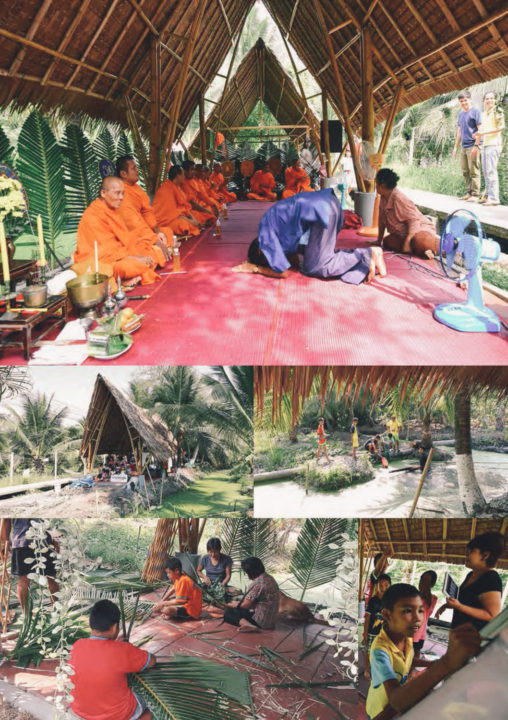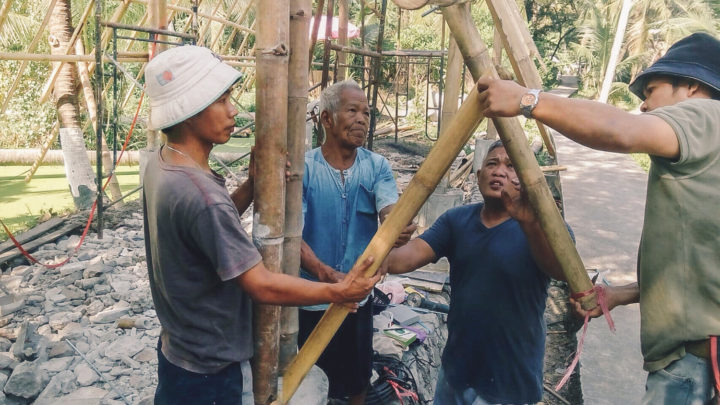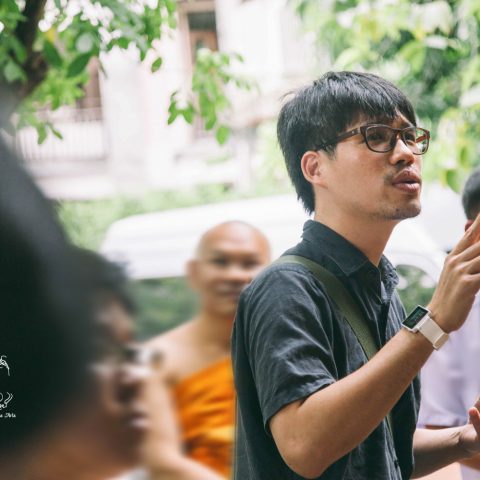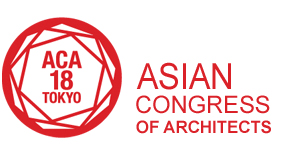
รางวัล Honorable Mention ในประเภท Social Responsible Architecture | ARCASIA Award จากสภาสถาปนิกแห่งเอเชีย (Architect Regional Council Asia)
คลองบางประทุน เป็นหนึ่งในย่านชุมชนชาวสวนดั้งเดิมของธนบุรีที่มีการตั้งถิ่นฐานมาตั้งแต่สมัยอยุธยา (ประทุนแปลว่า หลังคา สื่อถึงต้นไม้สองข้างคลองที่ใหญ่โค้งเข้าหากันจนปิดเป็นหลังคา แสดงความเป็นชุมชนเกษตรกรรมที่อุดมสมบูรณ์) ย่านชุมชนแห่งนี้กำลังเผชิญผลกระทบจากความเปลี่ยนแปลงสภาพเศรษฐกิจ สังคม และการพัฒนาของเมือง ทำให้คลองถูกลดความสำคัญจากทางคมนาคมสัญจรหลักกลายเป็นระบบระบายน้ำ พื้นที่สวนที่เคยอุดมสมบูรณ์หลายแห่งกำลังประสบปัญหาจากสภาพแวดล้อมความเป็นเมืองและการขาดแคลนแรงงานภาคเกษตร กลายเป็นที่ว่างที่กำลังจะถูกเปลี่ยนให้กลายเป็นโครงการพัฒนาอสังหาริมทรัพย์ พร้อมไปกับการย้ายออกไปอยู่อาศัยที่อื่นของชาวชุมชน
ชาวชุมชนที่เห็นความสำคัญของภูมิปัญญาและวิถีชาวสวนริมคลองที่สืบทอดมาอย่างต่อเนื่องในพื้นที่ และตระหนักในสถานการณ์ความเปลี่ยนแปลงดังกล่าว ได้รวมตัวกันเป็นกลุ่ม “รักษ์บางประทุน” เพื่อดำเนินกิจกรรมการอนุรักษ์สภาพแวดล้อมภูมิปัญญา และสร้างความตระหนักในความสำคัญของคลองในพื้นที่มาอย่างต่อเนื่องตั้งแต่ปี พ.ศ. 2554
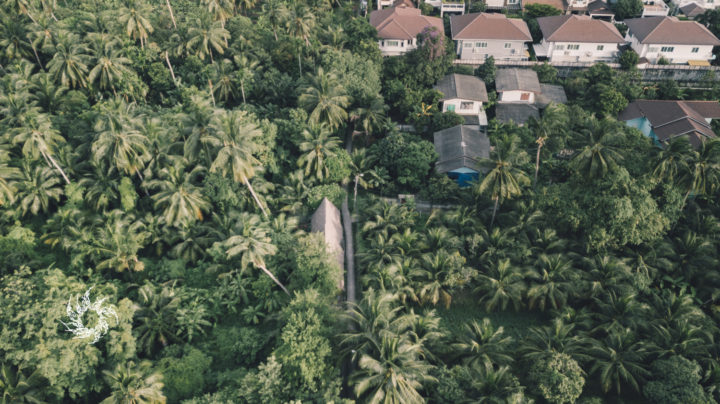
ในเดือนมิถุนายน 2016 The Association of Siamese Architects – Community Act Network (ASA-CAN) ได้ร่วมกับสถาบันอาศรมศิลป์ จัด Place Making: Living With Water Workshop ในพื้นที่ชุมชนบางประทุน ให้กับนักศึกษาสถาปัตยกรรมจากสถาบันต่าง ๆ นักศึกษาที่เข้าร่วม Workshop ได้นำเสนอแนวความคิดในการสร้างศูนย์ชุมชนขึ้น ณ บริเวณซุ้มขายก๋วยเตี๋ยวริมสวนในชุมชน ซึ่งเป็นพื้นที่รวมตัวของชาวชุมชนอยู่แต่เดิม ให้เป็นพื้นที่สำหรับการทำกิจกรรมต่างๆของชุมชนอย่างมั่นคงถาวร ซึ่งชาวชุมชนได้ต่อยอดแนวความคิดดังกล่าวไปสู่การสร้าง “ศูนย์เรียนรู้ชุมชนบางประทุน” ขึ้น เพื่อเป็นพื้นที่ในการถ่ายทอดภูมิปัญญาและจัดกิจกรรมการเรียนรู้ต่างๆให้กับเยาวชนในพื้นที่ เป็นพื้นที่รวมตัวในการทำกิจกรรมต่าง ๆ และรองรับการจัดตลาดนัดผลผลิตการเกษตรของชาวชุมชน รวมถึงเป็นสัญลักษณ์ในการสืบสานภูมิปัญญาและชีวิตของชุมชนชาวสวนริมคลอง ให้คงอยู่คู่ไปกับความเปลี่ยนแปลงและการพัฒนาของเมืองอย่างยั่งยืน
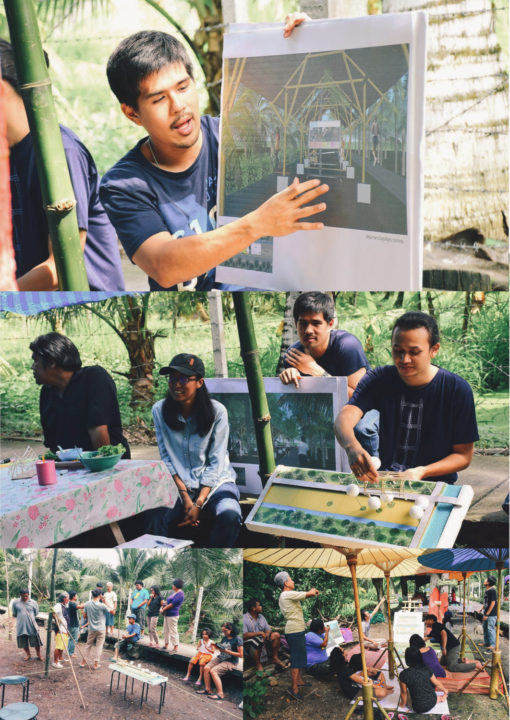
การก่อสร้างที่ต่อยอดมาจากภูมิปัญญา
โครงการนี้ใช้เทคโนโลยีการก่อสร้างที่เหมาะสม (Appropriate Technology) เพื่อให้ชาวบ้านสามารถก่อสร้างได้ด้วยตัวเอง โครงสร้างหลักเป็น Treated Bamboo Structure with Bolts and Nuts connection joints ที่ถูกต่อยอดมาจากภูมิปัญญาในการสร้างเรือนไม้ไผ่เครื่องผูกของชาวบ้านให้มีความแข็งแรงและร่วมสมัยมากยิ่งขึ้น ตั้งอยู่บนระบบฐานรากคอนกรีตเสริมเหล็กเพื่อไม่ให้ไม้ไผ่สัมผัสกับความชื้นจากพื้นดินโดยตรงและมีความทนทานมากยิ่งขึ้น ส่วนโครงสร้างพื้นเป็นการรื้อฟื้นภูมิปัญญาในการลอกเลนจากร่องสวนข้างพื้นที่ศูนย์และนำมาบดอัดให้แน่นก่อนปูด้วยคอนกรีตบล็อกเพื่อให้สะดวกต่อการใช้งานได้อย่างยืดหยุ่น
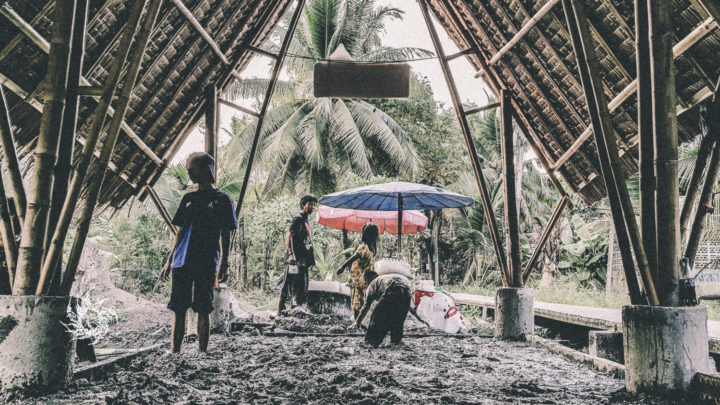
วัสดุเกือบทั้งหมดเป็นวัสดุธรรมชาติที่ได้จากภายในท้องถิ่น (Local) โครงสร้างหลักเป็นไม้ไผ่ที่ปลูกและดูแลในจังหวัดข้างเคียง หลังคามุงด้วยใบจากซึ่งเป็นพืชที่พบได้ทั่วไปในระบบนิเวศน์บริเวณนี้ของกรุงเทพมหานคร ร่วมกับวัสดุอุตสาหกรรมที่ผลิตและหาได้ง่ายในท้องตลาด อย่างแผ่นคอนกรีตบล็อกปูพื้น เพื่อสะท้อนถึงภูมิปัญญาในการสร้างที่อยู่อาศัยอย่างเรียบง่ายสอดคล้องกับธรรมชาติของชุมชนชาวสวนธนบุรี
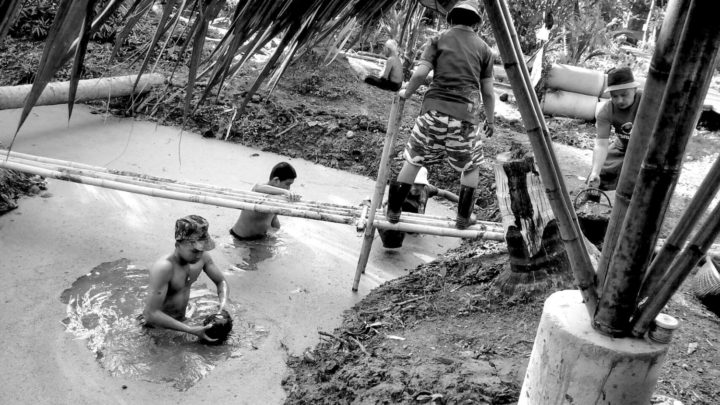
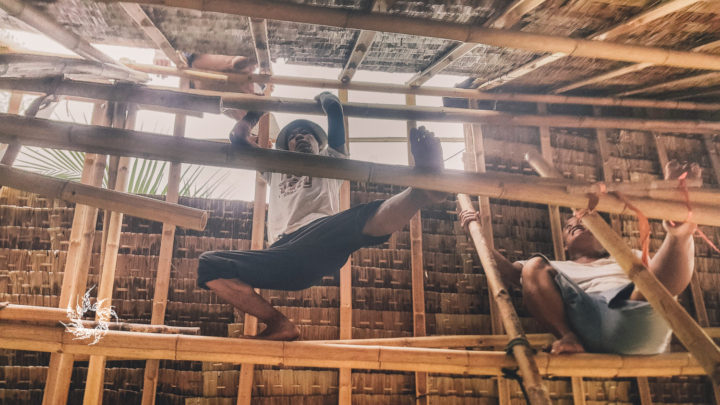
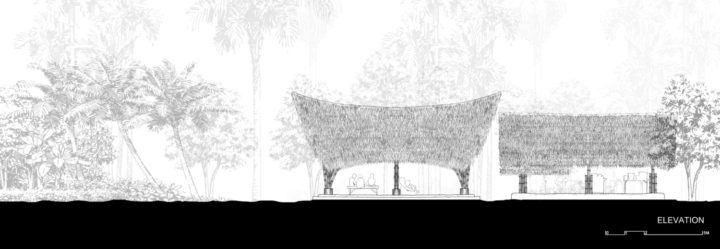
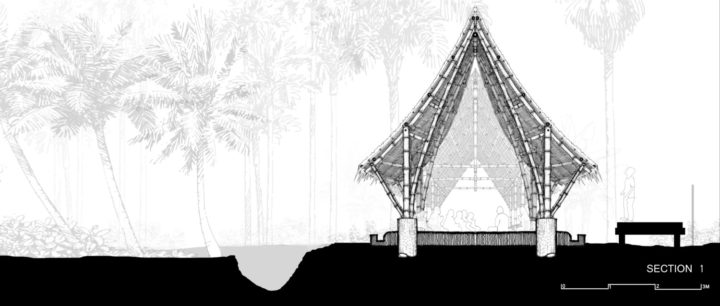
เป้าหมายในกระบวนการออกแบบและก่อสร้างศูนย์เรียนรู้ชุมชนบางประทุนนี้ มีหัวใจสำคัญอยู่ 3 ประการ ได้แก่ การเป็นศูนย์รวมจิตใจของชาวชุมชน การสร้างการเรียนรู้เพื่อถ่ายทอดและสืบสานภูมิปัญญาของชุมชนชาวสวนริมคลอง และการสร้างสัญลักษณ์ที่สื่อถึงความหวังในการสืบต่อวิถีชาวสวนริมคลองในยุคสมัยปัจจุบัน
1.
การเป็นศูนย์รวมจิตใจของชาวชุมชน นอกเหนือจากการเป็นพื้นที่รองรับกิจกรรมการรวมตัวของชาวชุมชน การสร้างให้ศูนย์เรียนรู้แห่งนี้บรรลุความเป็นศูนย์รวมจิตใจของชุมชนยังเกี่ยวข้องกับการสร้างความรู้สึกเป็นเจ้าของ และความรู้สึกภาคภูมิใจร่วมกันของชาวชุมชน ในกระบวนการออกแบบและก่อสร้างโครงการนี้จึงให้ความสำคัญอย่างมากกับการสร้างการมีส่วนร่วมในทุกขั้นตอน ตั้งแต่การพูดคุยเกี่ยวกับวัตถุประสงค์ Program และวิถีชีวิตที่จะเกิดขึ้นภายในโครงการ ขั้นตอนการออกแบบสถาปัตยกรรม ไปจนถึงการลงแขกก่อสร้างโครงการร่วมกัน เพื่อให้ศูนย์เรียนรู้ที่จะเกิดขึ้นนี้ตรงกับความต้องการของชาวชุมชนมากที่สุด ให้เป็นศูนย์เรียนรู้ที่ชาวชุมชนเป็นเจ้าของอย่างแท้จริง
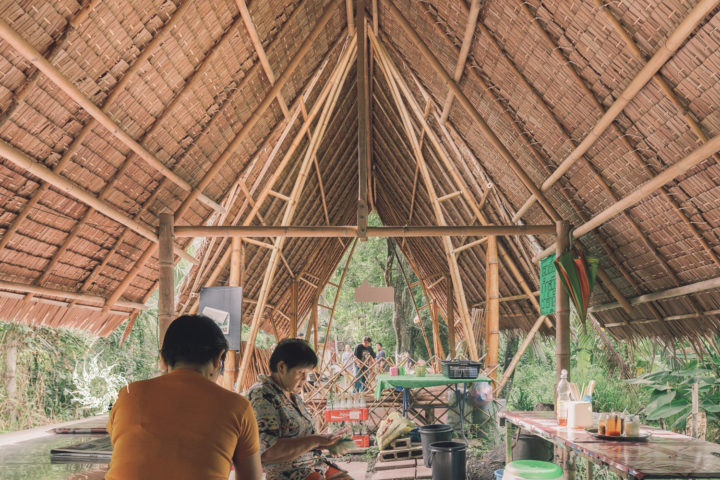
2.
สร้างการเรียนรู้เพื่อถ่ายทอดและสืบสานภูมิปัญญาของชุมชนชาวสวนริมคลอง ไม่เพียงการสร้าง Space สำหรับกิจกรรมการเรียนรู้ด้านภูมิปัญญาของชุมชน ตัวสถาปัตยกรรมเองก็เป็นการสร้างการเรียนรู้เช่นเดียวกัน โดยการถอดรหัสการออกแบบวางผังตั้งบ้านเรือนของชาวสวนริมคลอง และนำมาใช้ในการวางผังโครงการ การเลือกออกแบบให้เป็นสถาปัตยกรรมไม้ไผ่ ซึ่งต่อยอดมาจากภูมิปัญญาในการผูกเรือนดั้งเดิมของชาวชุมชน รวมถึงในระหว่างการก่อสร้างก็เป็นกระบวนการเรียนรู้ที่ทำให้เกิดการรื้อฟื้นและถ่ายทอดภูมิปัญญาต่างๆในการปลูกเรือนจากรุ่นคนเฒ่าคนแก่สู่รุ่นลูกหลาน เช่น ภูมิปัญญาในการสร้างสถาปัตยกรรมไม้ไผ่ รวมถึงประเพณีการขุดลอกเลนออกจากร่องสวนและนำมาบดอัดเพื่อใช้เป็นพื้นของตัวอาคาร
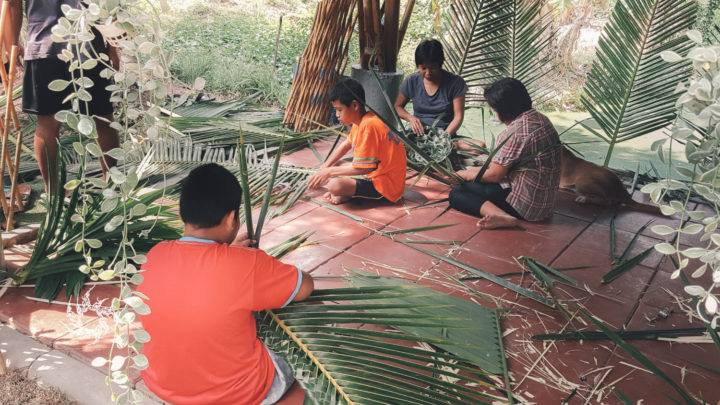
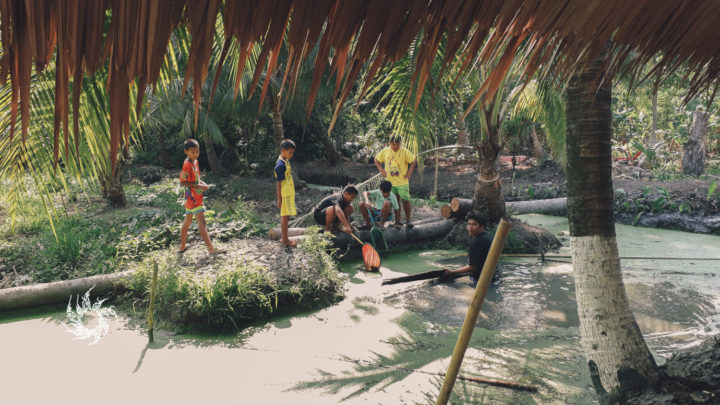
3.
สัญลักษณ์ของความหวังในการสืบต่อวิถีชาวสวนริมคลองในยุคสมัยปัจจุบัน โดยการนำรูปแบบและการวางผังของศาลาทำบุญสวน มาปรับให้มีรูปแบบคล้ายรูปทรงของเรือประทุนที่มีความโดดเด่นเป็นเอกลักษณ์ สื่อถึงคลองบางประทุนและมีรายละเอียดทางสถาปัตยกรรมที่ร่วมสมัยมากยิ่งขึ้น แต่ยังคงหัวใจของความเรียบง่ายเป็นหนึ่งเดียวกับธรรมชาติเอาไว้ เพื่อให้สถาปัตยกรรมของศูนย์นี้ทำหน้าที่เป็นอัตลักษณ์ใหม่ ที่สร้างความภาคภูมิใจให้กับชาวชุมชนและสร้างความรับรู้ต่อสังคมในวงกว้าง
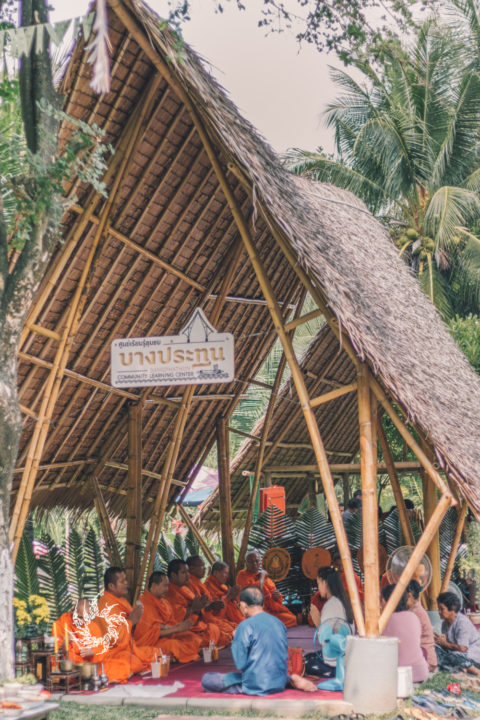
ความท้าทาย สำคัญของโครงการ คือสถานการณ์ของชุมชนที่กำลังเผชิญกับความเปลี่ยนแปลงวิถีชีวิตภูมิปัญญาชาวสวนริมคลองที่กำลังเลือนหายไป พร้อมกับการเข้ามาของโครงการพัฒนาอสังหาริมทรัพย์ รวมถึงความรู้สึกของชาวชุมชนจำนวนมากที่รู้สึกไม่มีทางเลือกนอกเหนือจากการขายที่เพื่อไปอยู่อาศัยภายนอก
การคลี่คลายทำได้โดยใช้กระบวนการมีส่วนร่วมในการพูดคุยร่วมกันกับชาวชุมชน ถึงคุณค่าและความสำคัญของวิถีและภูมิปัญญาเดิม จนเกิดความตระหนักที่อยากจะรักษาไว้ร่วมกัน การกำหนดวัตถุประสงค์โครงการ การออกแบบสถาปัตยกรรม ไปจนถึงการลงมือก่อสร้างและจัดกิจกรรมการเรียนรู้ต่างๆในพื้นที่โครงการร่วมกันของชาวชุมชน
แนวทางที่เกิดขึ้นคือการต่อยอดสถาปัตยกรรมพื้นถิ่นภายในชุมชนให้เป็นสถาปัตยกรรมไม้ไผ่ที่มีความร่วมสมัย ที่กลายเป็นสัญลักษณ์ของความหวังในการสืบต่อวิถีชาวสวนริมคลองให้อยู่ควบคู่ไปกับการพัฒนาเมืองของชาวชุมชนบางประทุน
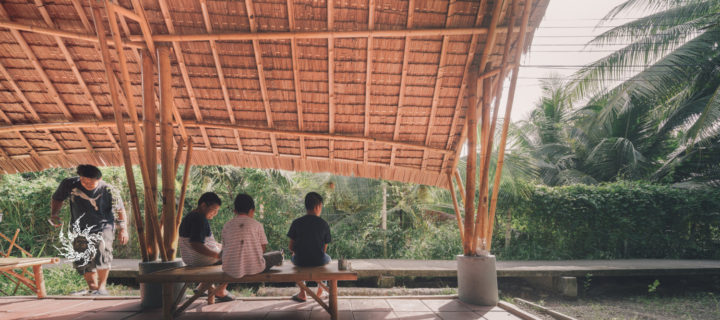
Arsomsilp Community and Environmental Architect (Thailand)
Global climate change poses the greatest threat to the entire world. In recent years, there has been a marked increase in the frequency and intensity of extreme weather events. An important causal factor is the drastic growth of urban areas along with an inverse decline of natural areas, which in turn reflects the spiritual crisis of humanity. These scenarios are happening in Bangkok, once known as the Venice of the East, as well. The canals and orchard communities, the unique settlements that reflect the wisdom of living harmoniously with nature, were ignored and rapidly replaced by real estate developing areas.
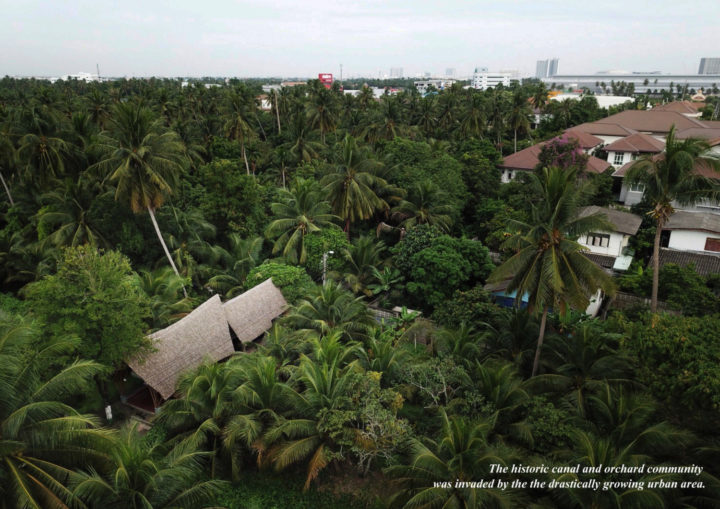
Think Globally, Act Locally
Bangprathun canal was one of the orchard communities facing this scenario. People in the community, being increasingly concerned with this problem, came together as a group called “Rak Bangprathun”, meaning to conserve Bangprathun, to campaign for conserving the natural environment and communal knowledge, along with raising awareness of the vitality of the canal areas. Seeing the opportunity to make a “Small Change” as an urban catalyst to preserve the agriculture area and revitalize the canal network in Bangkok to ensure a more sustainable future of our society, “Arsomsilp Community and Environmental Architects” has voluntarily joined with the community to establish the Bangprathun Community Learning Center to serve as a learning platform to spread the community’s vernacular knowledge to younger generations, and serve as a gathering area for everyone in the community, while also empowering people in the community to conserve the soul of the traditional canal orchard community and allow it to sustainably coexist with the changes and developments in the city.
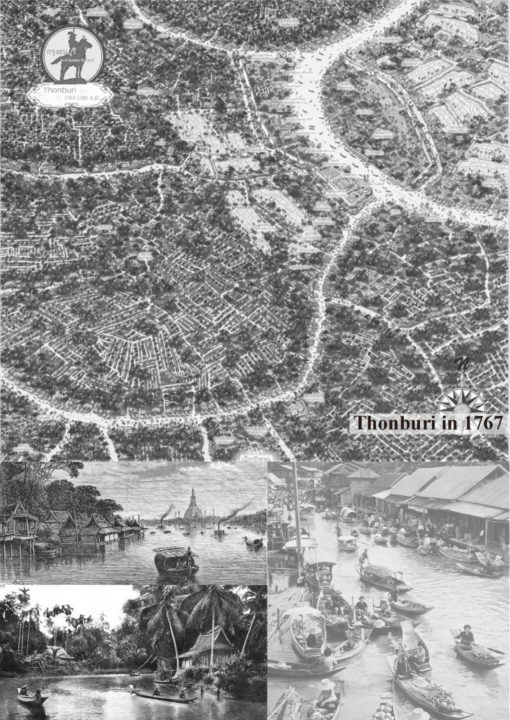
The heart of the community
To ensure that the center is the heart and mind of the community meant not only making the center an activity space for all community members, but also having it be a center of learning that the community is proud of and considers its own. Therefore, the design and construction process of this project aimed to have people in the community be a part of the overall process from the very beginning onwards; e.g. communicating the main objectives of the program, the activity and functional spaces, the architectural design process, as well as the community’s part in the joint construction process. This is to ensure a true sense of ownership for the people in the community and that the learning center serves everyone’s need .
A learning space for inheriting the vernacular wisdom
The architecture of the center itself is intentionally presented as learning experiences. This includes the project planning interpretation, which is adapted from the vernacular garden merit making pavilion lay out, the bamboo structural technique that is developed from the community’s historical constructing technique, and the “in between” construction approach that create a learning process to revive traditional building techniques such as bamboo housing and the traditional way of flooring (digging and compacting mud along the garden ditch to become a base floor), so as to provide knowledge and inspiration for younger generations. The architecture form was also designed to reflect the uniquely attractive “Prathun boat,” which represents the Prathun canal. The result is a new architectural design with details that are more modern, yet also blends in with nature in harmony. It is a design that reflects the proudness of the community and its people in their heritage and canal community wisdom.
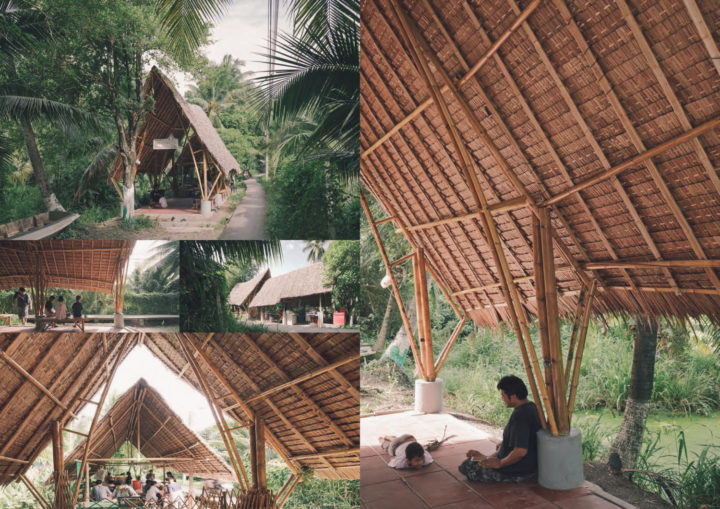
A catalyst to conserve the canals and the orchard communities amongst the changes in the city
The project serves as a catalyst to bring together and revitalize the spirit of the community. It also provides a good opportunity to revive and preserve the community’s vernacular knowledge to educate and pass on to younger generations, and to be a symbol of pride and hope in the community’s spirit and traditions in the face of changes and development in the city.
The project will also act as an urban acupuncture, serving to inspire more efforts for conservation of the canals and orchard communities, which are the traditional type of settlements for people living in Thonburi and Bangkok, by helping it to exist in harmony with the development of the city. This will help to sustain the original social structure of the community, a significant base of the community’s overall social strength, as well as conserve the garden plantation areas along the canal, an important component of the greenery of Bangkok that is now critically few and far between. The overall benefit will be a more sustainable future for our society, living harmoniously with nature.
